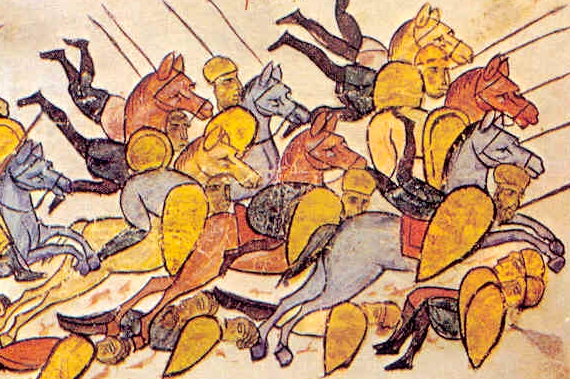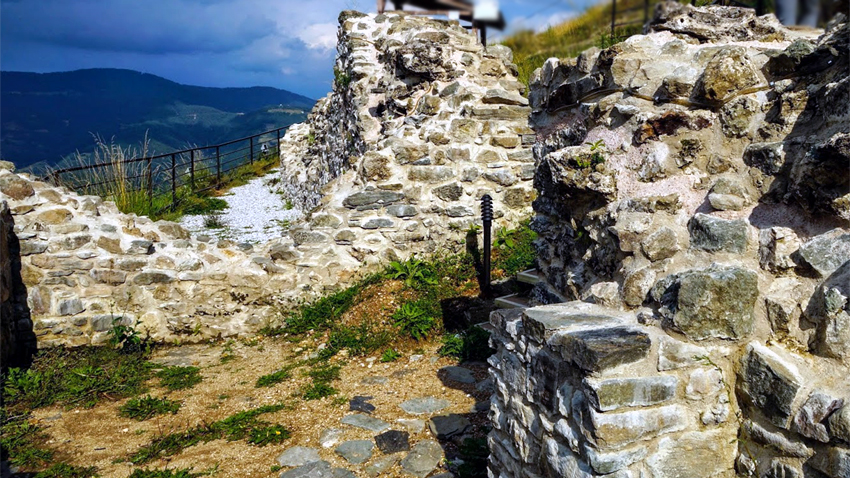There is hidden power in the depths of this land where many heroes were born and the memory of them passes along through folk songs and legends as example for future generations. One of these heroes is Momchil Voevoda. More about him from archaeologist Prof. Nikolay Boyadzhiev, curator at the Regional Museum of History in the town of Smolyan:
"In the 40s of the 14th century for two years between 1343 and 1345, Momchil ruled as vassal of John Kantakouzenos and then as an independent ruler. He ruled the region of central and southern Rhodope Mountains and part of the Aegean Sea and died in battle, fighting against the Ottomans when he was 40 years old, on July 7, 1345. According to historical sources, in the battle against the combined forces of Turks and Byzantines he showed great heroism. After the conquest of the Balkans by the Ottomans, people needed heroes and examples and therefore in the memory of the population of the Rhodopes the legendary image of Momchil remains."
Momchil received two Byzantine titles. In the 40s of the XIV century there was a civil war ranging in the Byzantine Empire. The feuding camps were those of regents of the infant heir John V Palaiologos and the self-proclaimed Emperor John Kantakouzenos, who appointed Momchil as governor of the Rhodopes, Nikolay Boyadzhiev says. In order to win Momchil on her side Empress Anna of Savoy honoured him with one of the highest Byzantine titles at the time - despot. John Kantakouzenos was also seeking union with Momchil and honored him with the second rank after the imperial title sebastokrator. Ultimately, however, no one managed to win him to their side. He followed his own interests and in different periods fought against both sides. Momchil received two strongholds in the Rhodope Mountains, one of which - Povisd. He expands his territory, conquering the Xanthi Fortress and making it his residence. In his fight against the Ottomans he won the battle of Abdera (in today's Greece). In early summer of 1345 the Byzantines led by John Kantakouzenos and his Turkish allies managed to destroy the army of Momchil and to kill him. This happened on July 7, 1345 at Peritor fortress on the coast of the Aegean Sea.

The historical personality of Momchil and the legendary image of Momchil Voevoda closely intertwine, Nikolay Boyadzhiev says and adds:
 "He was a very charismatic personality, a big, burly man. Ottoman chronicler Enver wrote that he was as tall as two men and resembled a minaret. During the siege of Komotini all who saw him were amazed by his appearance. Besides his heroism, his appearance also contributed to the legend that surrounds him. Chroniclers write that people who followed Momchil would rather die than abandon him. In the battle of Peritor, in which he was killed, his army fought bravely on the battlefield while he was alive, despite opponent outnumbered greatly Momchil’s army.”
"He was a very charismatic personality, a big, burly man. Ottoman chronicler Enver wrote that he was as tall as two men and resembled a minaret. During the siege of Komotini all who saw him were amazed by his appearance. Besides his heroism, his appearance also contributed to the legend that surrounds him. Chroniclers write that people who followed Momchil would rather die than abandon him. In the battle of Peritor, in which he was killed, his army fought bravely on the battlefield while he was alive, despite opponent outnumbered greatly Momchil’s army.”
Today, among the traces of Momchil’s activity remains Momchil Fortress near the village of Gradat in the municipality of Smolyan. Dr. Boyadzhiev is among its researchers:

"Momchil Fortress has two periods of occupation. One was at the end of the fifth and the beginning of the 6th century in the early Byzantine period, when it was built, probably during the reign of Anastasius I or Justinian, but then it was burned by the Slavs. In the eleventh century the fortress was restored and functioned until the Ottoman invasion in the 70s of the XIV century. It is known among locals as Momchilova fortress. In one of the written chronicles - "History" of the emperor John Kantakouzenos, one of the strongholds give to Momchil was mentioned under the name Povisd. From there came the name of the village Podvis, which is located at the foot of Momchil Fortress. The fact that in a certain period Momchil ruled the fortress has been preserved in the memory of local people.”

In 1966 the fortress was declared an archaeological monument of national importance. Czech historian Konstantin Jireček writes in his "History of Bulgaria" that the memory of Momchil is preserved in Herzegovinian Pirlitor and in Pirot, located today in Serbia, where because of consonance of names the legend of the forgotten seaside settlement of Peritor was adopted. There is no way of visiting Pirot without seeing its characteristic Momchilov grad fortress.
English: Alexander Markov
"Man does not know the way to heaven, but the horse does," says an ancient Thracian proverb. That is why the Thracian kings were necessarily sent to the afterlife together with their horses. Because of the numerous burial mounds of rulers from the..
An innovative museum site opens its doors in the military cemetery near Tutrakan. The "Tutrakan Epopee - 1916" memorial is situated in a new museum-exhibition building. It includes a number of new technologies that immerse the visitor..
The last and most destructive bombing of Sofia during World War II took place on April 17, 80 years ago. In 1944, on April 17 at noon, 350 American bombers, accompanied by Thunderbolt and Mustang fighters, dropped 2,500 bombs on..
An innovative museum site opens its doors in the military cemetery near Tutrakan. The "Tutrakan Epopee - 1916" memorial is situated in..
"Man does not know the way to heaven, but the horse does," says an ancient Thracian proverb. That is why the Thracian kings were necessarily sent to the..

+359 2 9336 661
